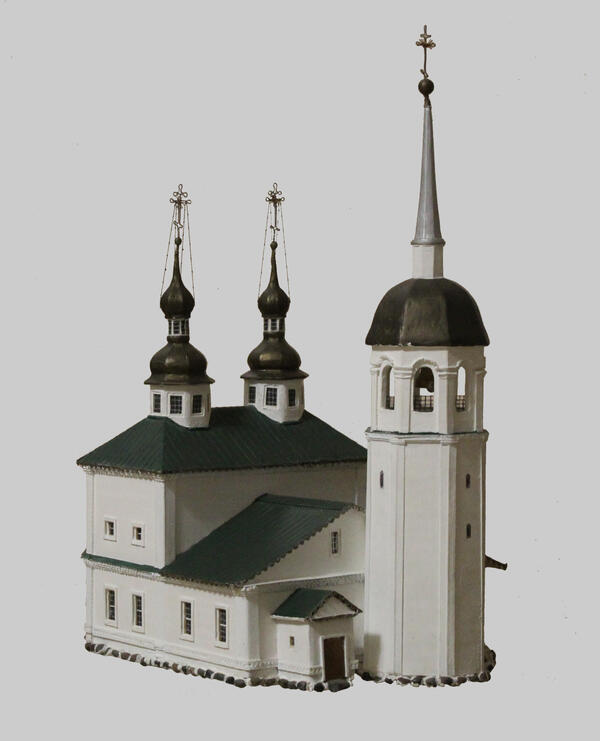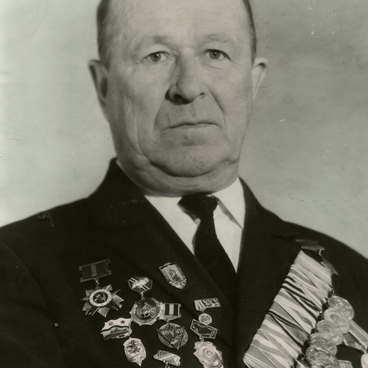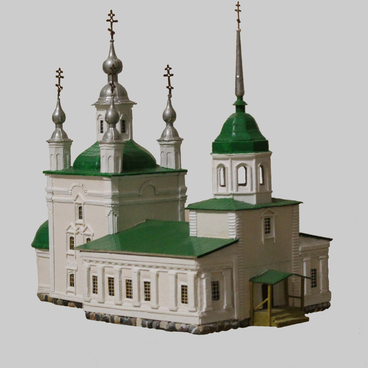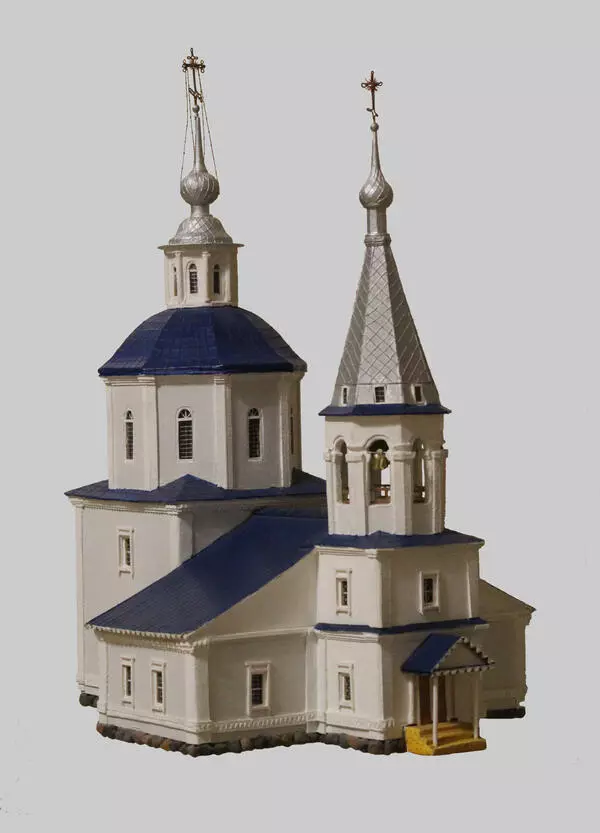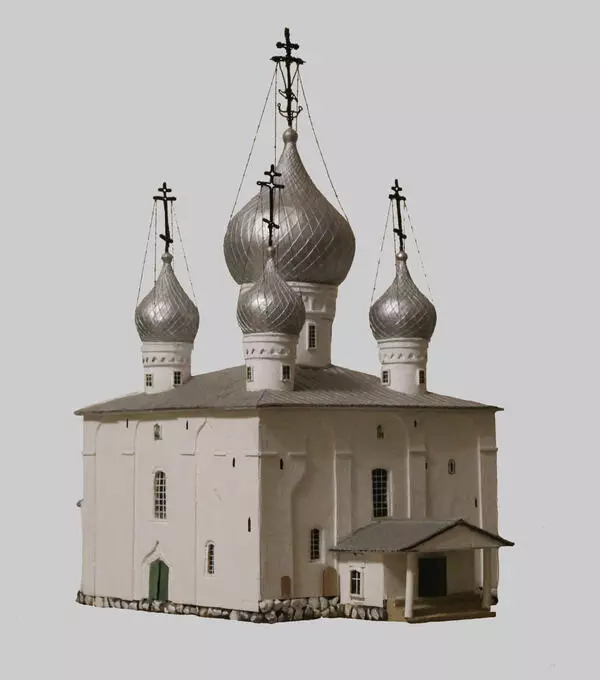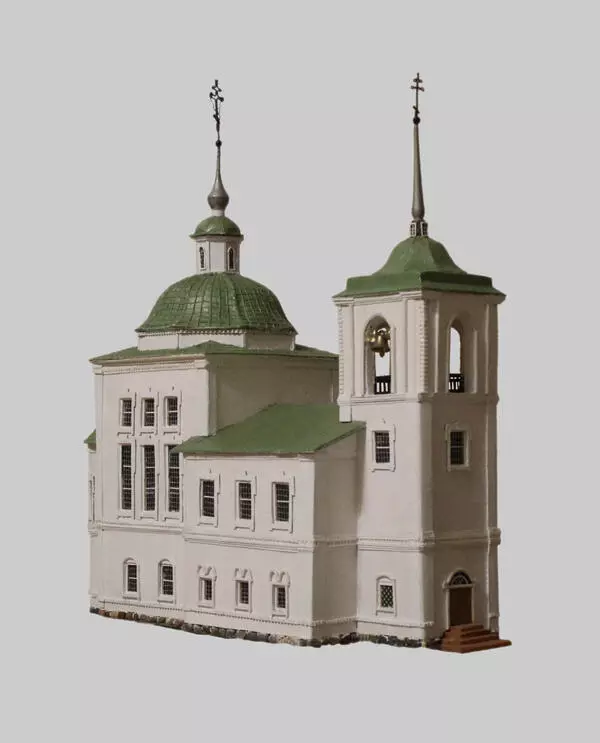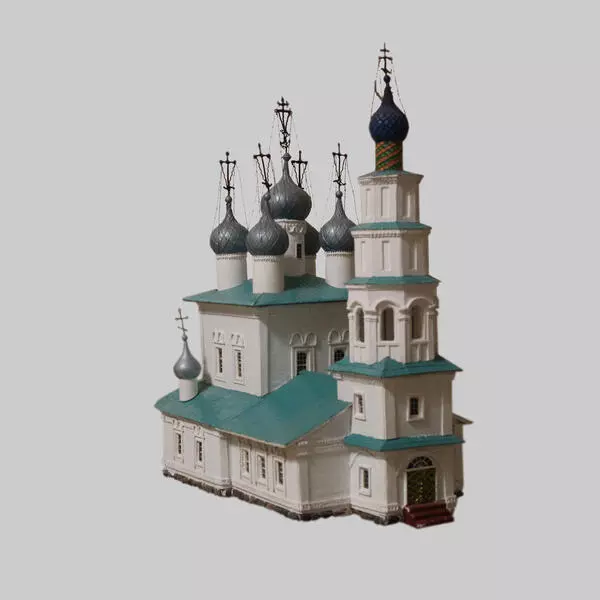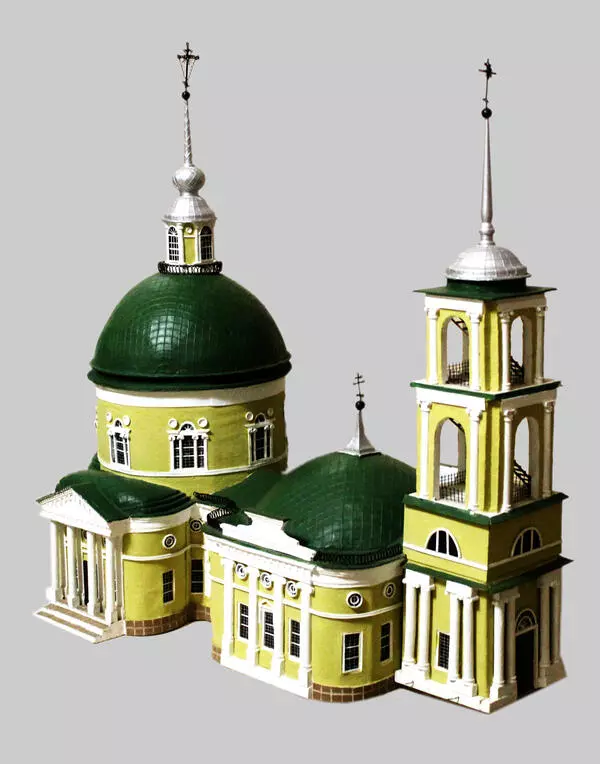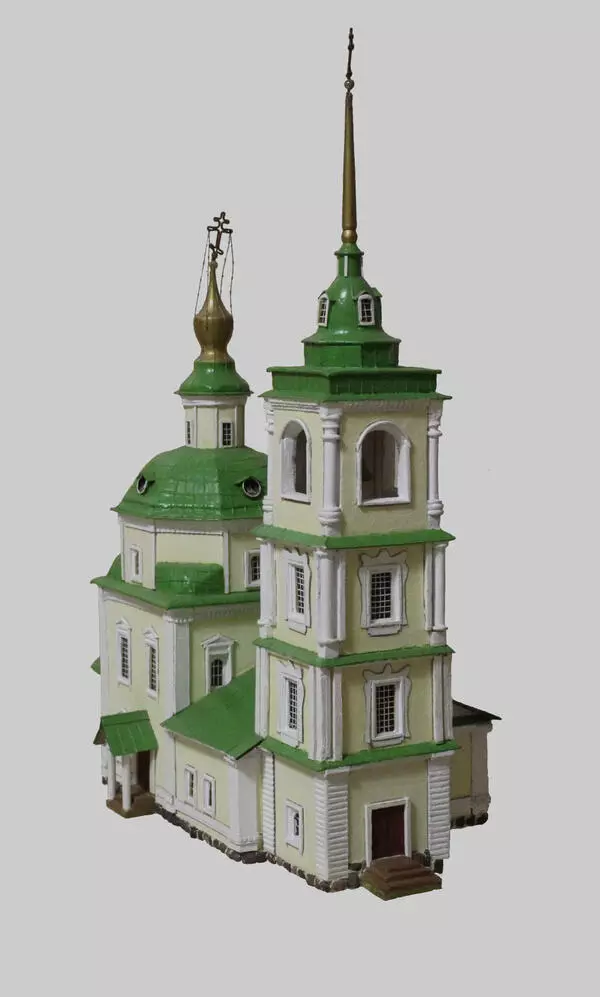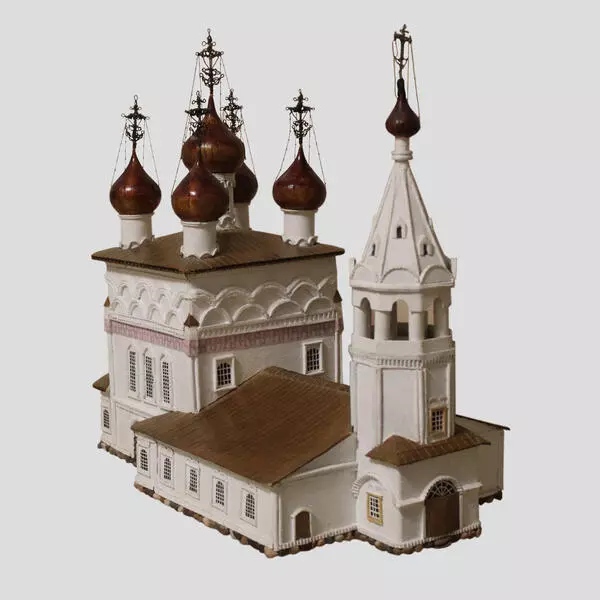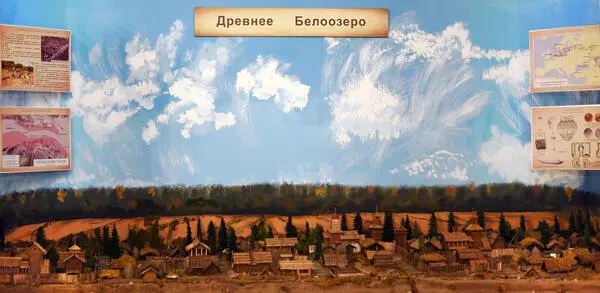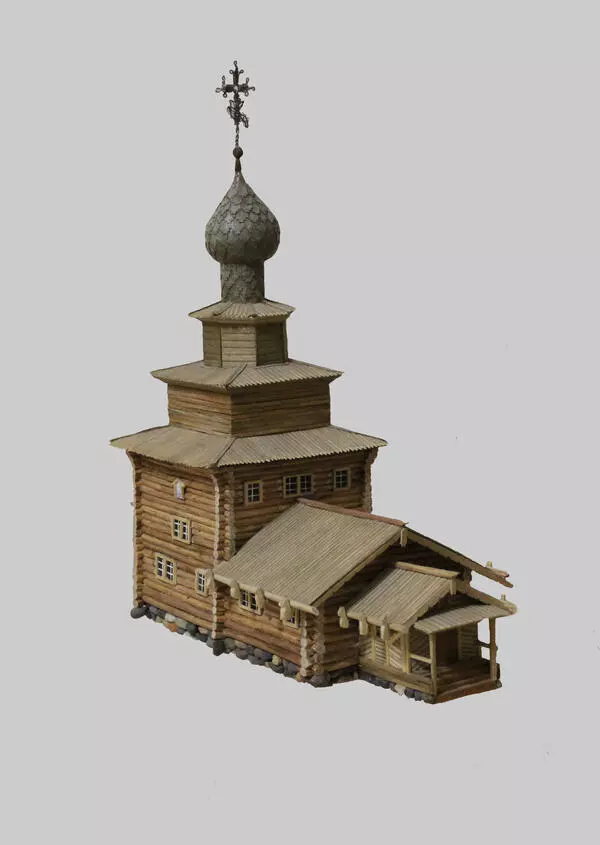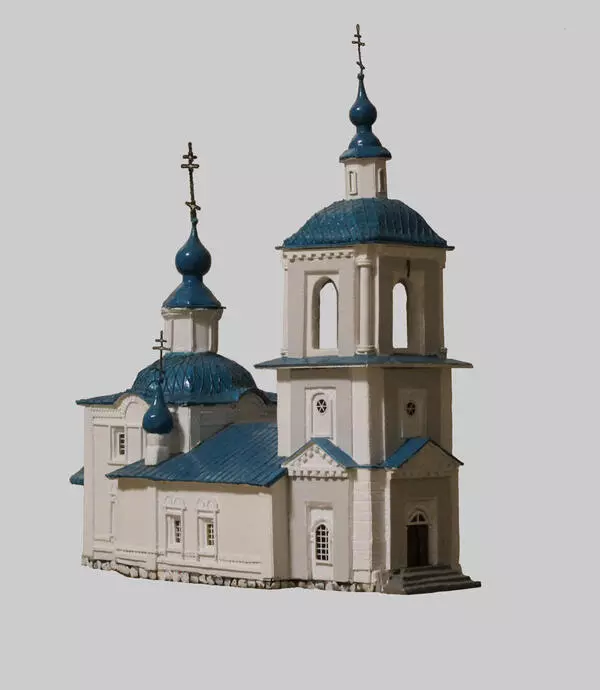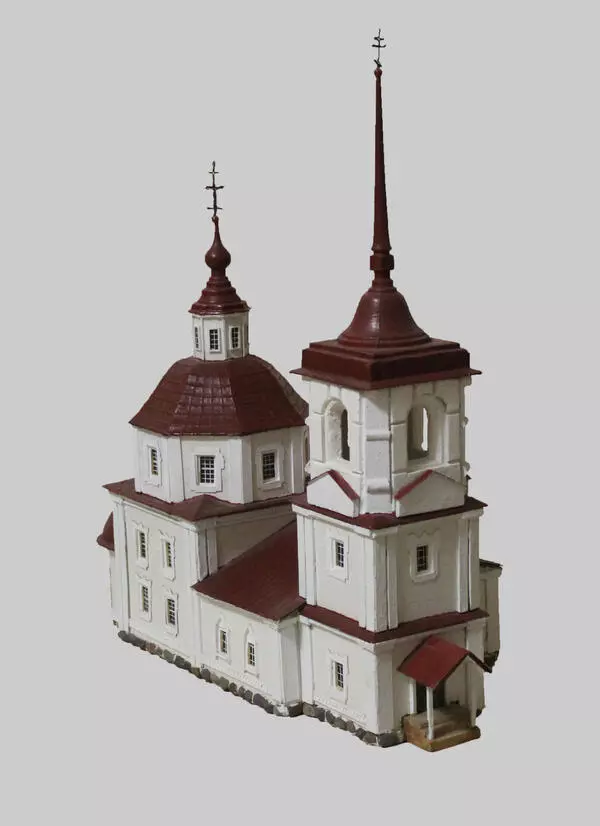The temple with the main altar consecrated in the name of Basil the Great is assumed to have appeared in Belo-ozero in the 10-11th centuries. Before the stone cathedral of Basil the Great was built, there were wooden church buildings. According to the Re-inventory book of the City of Belo-ozero of 1617/18, at that time the cathedral was wooden with the side-altars in the name of Nikolas the Wonderworker and Georgius the passion-bearer of Christ and the bell tower. The bells are described as follows: ‘13 poods without a quarter, one bell 5 pood, and 2 bells both two and a half pood, 8 pood of copper’.
The temple of Vasily of Caesarea was ‘rUzhny’, i.e. its priests were salaried from the government treasury. The cathedral priesthood consisted of: Archpriest Michael, and priests Basilisk, deacons Denis and Joseph. In the Census Book of Churches and the clergy of a parish of Belozersk County and Charond District, dated with the end of the 17th century, it is stated that the Belozersk Fortress had a ‘cathedral church of the Universal teacher Vasily the Great, and the side-altar of the great martyr George and Saint Nicholas the Miracle-worker’, it also listed all church servants and their children.
The construction of the stone temple of Basil the Great on the site of the burned wooden one, began according to the agreement of Ambrosia the bishop of VOlogda and Belozersk, given on July 4, 1736.
In 1785, the cathedral of Basil the Great was adjoined at the bell tower by a side-alter in the name of Nikolai the Wonder Worker.
Ethnographer Petr ChElichev, who visited Belozersk in 1791, noted that inside the fortresses there were ‘two government-owned stone churches: one of them unheated -- for summer service, the Church of the Transfiguration of the Lord; and the 2nd one heated, for winter service – the Church of Basil the Great and Nikolay the Wonder Worker’.
In another description of Belozersk, left at about the same time, two cathedral stone churches are also listed among the buildings of the fortress, of which: ‘one, big, in the name of the Transfiguration of the Lord, and the other - in the name of Basil the Great, with a very tall bell tower’. Next to it was a bishopric house and a seminary.
The cathedral of Basil the Great was not recognized as a monument of history and culture in the Soviet times. This led in the 1960s to the destruction of both the cathedral and its bell tower in the north-western part of the Kremlin. In 2014, a memorial cross was erected on the site of the destroyed temple of Basil the Great.
The temple of Vasily of Caesarea was ‘rUzhny’, i.e. its priests were salaried from the government treasury. The cathedral priesthood consisted of: Archpriest Michael, and priests Basilisk, deacons Denis and Joseph. In the Census Book of Churches and the clergy of a parish of Belozersk County and Charond District, dated with the end of the 17th century, it is stated that the Belozersk Fortress had a ‘cathedral church of the Universal teacher Vasily the Great, and the side-altar of the great martyr George and Saint Nicholas the Miracle-worker’, it also listed all church servants and their children.
The construction of the stone temple of Basil the Great on the site of the burned wooden one, began according to the agreement of Ambrosia the bishop of VOlogda and Belozersk, given on July 4, 1736.
In 1785, the cathedral of Basil the Great was adjoined at the bell tower by a side-alter in the name of Nikolai the Wonder Worker.
Ethnographer Petr ChElichev, who visited Belozersk in 1791, noted that inside the fortresses there were ‘two government-owned stone churches: one of them unheated -- for summer service, the Church of the Transfiguration of the Lord; and the 2nd one heated, for winter service – the Church of Basil the Great and Nikolay the Wonder Worker’.
In another description of Belozersk, left at about the same time, two cathedral stone churches are also listed among the buildings of the fortress, of which: ‘one, big, in the name of the Transfiguration of the Lord, and the other - in the name of Basil the Great, with a very tall bell tower’. Next to it was a bishopric house and a seminary.
The cathedral of Basil the Great was not recognized as a monument of history and culture in the Soviet times. This led in the 1960s to the destruction of both the cathedral and its bell tower in the north-western part of the Kremlin. In 2014, a memorial cross was erected on the site of the destroyed temple of Basil the Great.

